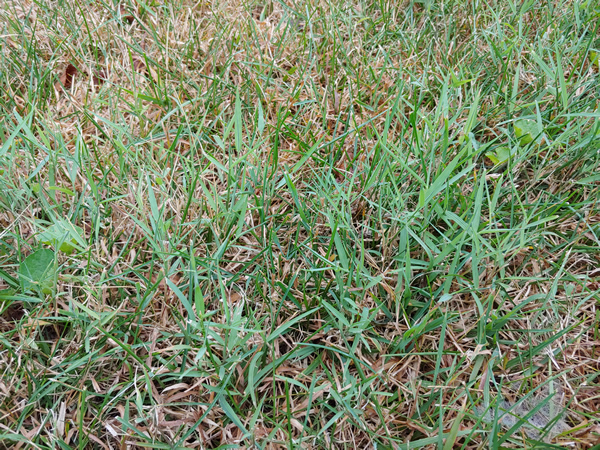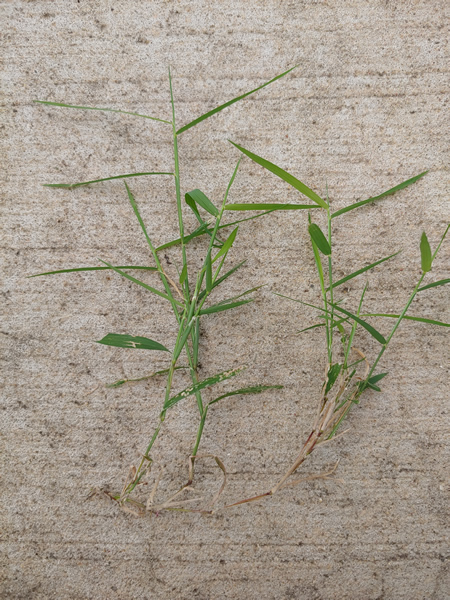Issue 9, August 12, 2019
Nimblewill Noticeable During Hot Dry Conditions
There have been a few recent calls about nimblewill (Muhlenbergia schreberi). With the hot, dry conditions we have had lately, our cool-season turfgrass growth has slowed, making warm-season nimblewill growth more noticeable. While cool-season turfgrasses are dormant, nimblewill is actively growing and enjoying the lack of competition. This unbalance can allow nimblewill to be a serious weed problem.

Typically, nimblewill is most obvious in early to mid-spring when lawns first green-up. While dormant, its appearance is that of very light tan-colored, “puffed up” patches (the patches look like buff-colored scouring pads). When nimblewill greens up to a grayish- or bluish-green in late spring, its appearance is more inconspicuous. It tends to go dormant fairly early in the fall as well and therefore may be noticed then too.
Nimblewill is a perennial grass that is fairly common in Illinois. Typically found growing in shady or wet lawns and landscapes, it creeps by aboveground, horizontal stems that can root at the nodes and readily form patches. Its leaves are smooth, quite narrow, and short compared to many grass species. Individual plants look almost wiry. In fact, another name for this grass is wire-grass. A closer look at this plant will reveal a very short, membranous, toothed ligule. The leaves are rolled in the bud. The flower is a fine, slender panicle.

In Illinois, Nimblewill may be confused with zoysiagrass which has a similar growth pattern. However, dormant zoysiagrass is more of a golden tan in color and unless planted it is very unlikely for it to suddenly appear as a weed.
Nimblewill is best controlled in the summer when it is actively growing. Controlling patches while they are smaller is recommended. Proper cultural practices can significantly aid in controlling lawn weeds. Be sure that watering, fertilizing, and cultivating are done properly and at the right time.
For optimal control when using post-emergent herbicides, nimblewill should be treated when it is young and actively growing in the late spring to early summer. Although we have missed this window for this year, we can add it to the spring to do list for next year. Late summer applications can be made but ideally, they should be done by August. It is recommended that you extend spray coverage beyond the immediate patches as creeping stems are prone to lurk in these areas. Stolons missed by applications may form subsequent patches.
Mesotrione and topramezone can be used to selectively control nimblewill growing in most cool-season turfgrasses. Be sure to carefully read and follow all label directions as the addition of a surfactant and multiple applications are needed. Yearly maximum use rates can be found on these labels. While both products can be applied postemergence, only mesotrione may be used preemergence. Additionally, mesotrione has good control of yellow nutsedge and both provide control of several broadleaf weeds as well. Treated, susceptible weeds will appear white in color. The whitening of turfgrass may last for several weeks which can be alarming to the uniformed. Be sure to prepare clients before using these products on their lawn.
Non-selective herbicides such as glyphosate can be used, but keep in mind that non-target desirable plants such as bluegrass may be seriously injured or killed if contacted by glyphosate.
Proper cultural practices can significantly aid in controlling lawn weeds. Be sure that watering, fertilizing, and cultivating are done properly and at the right time.
For up-to-date lawn weed control recommendations, consult with the University of Illinois Extension publication, “Illinois Commercial Landscape & Turfgrass Pest Management Handbook” as well as the “Home Yard and Garden Pest Guide.”
Author:
Michelle Wiesbrook